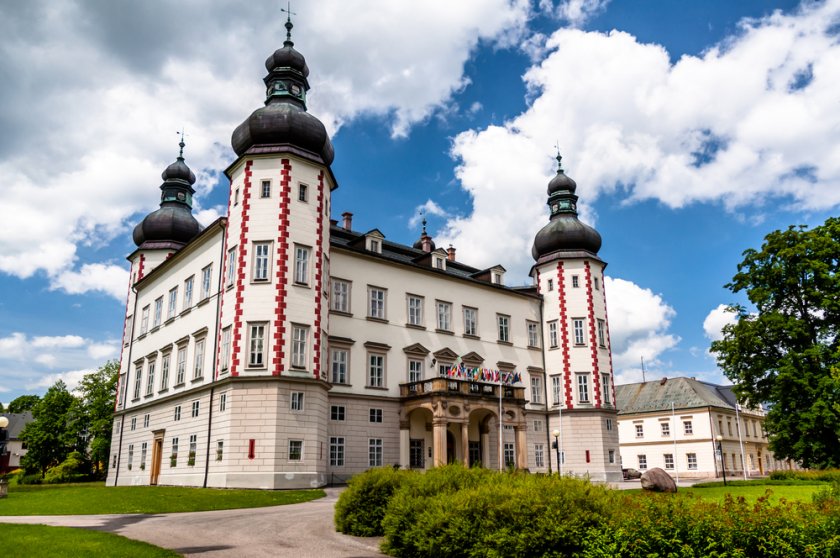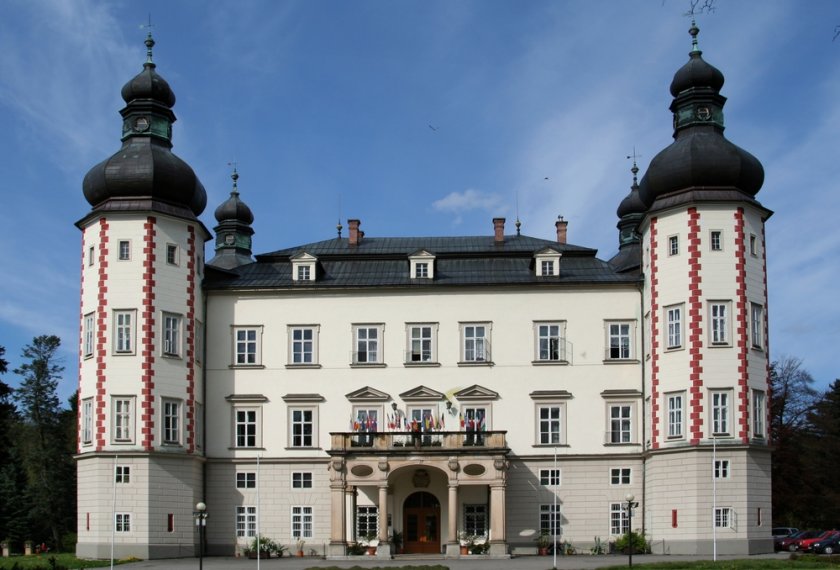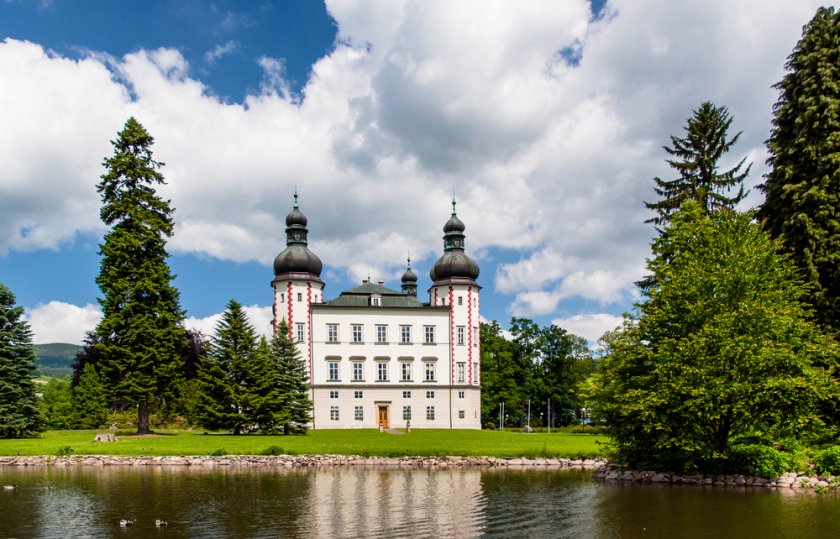Vrchlabi Chateau
Right in the heart of the town of Vrchlabí, near the square, we find a charming Renaissance chateau, set in the chateau park, adorned with artificial lakes. It is undoubtedly worth mentioning not only its history and architecture, but also the fact that it is one of the most beautiful secular buildings of the Renaissance period in Bohemia.
Information for visitors
Interesting facts Vrchlabi Chateau
In the places near the present chateau there has been a fortress since 1525, specifically in the places of today's pond. In 1533, the owner of the Vrchlabí estate was Kryštof of Gensdorf, who soon began construction of the castle, which was completed in 1546. It was a rectangular building with a majestic entrance hall and the original old fortress since the castle was used only for economic purposes.
In 1575, the chateau in Vrchlabí caught fire and was followed by only a temporary repair. The current appearance of the chateau was imprinted by a late renaissance renovation, carried out in the years 1605 to 1614 on the initiative of Vilém Miřkovský of Stropčice. Thanks to the modification, the chateau acquired corner towers and, overall, the building expanded. In the post-White Mountain period, the current owner of the Vrchlabí estate was confiscated and became part of Wallenstein's Frýdlant Duchy.
After the death of Albrecht of Wallenstein, Rudolf Morzin became the owner of the chateau, followed by Pavel Morzin, who in 1684 initiated further repairs to the chateau and the construction of the chateau chapel. Since 1791, the Vrchlabí chateau has been owned by Černínová, who had it renovated in 1820, including its surroundings, while the fortifications were removed. The designer of the reconstruction, which took place at the turn of the 19th and 20th centuries, was Josef Schulz.
The Černín chateau in Vrchlabí was sold during the First World War and has served administrative purposes ever since. It was nationalized after 1945 and currently houses the offices of the Municipal Office and the seat of the Krkonoše National Park. The castle premises are not open to the public.
Author: Andrea Štyndlová





